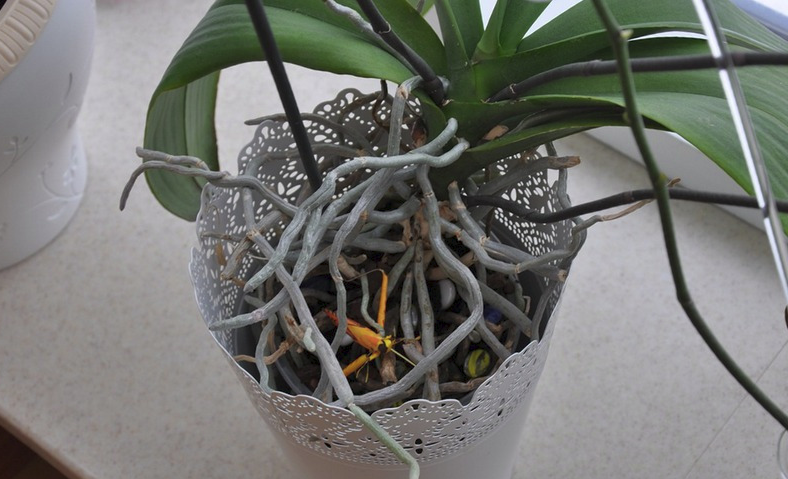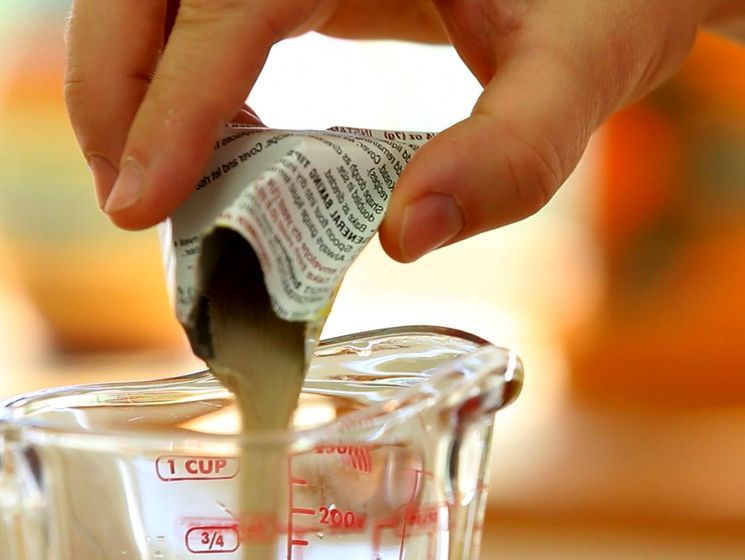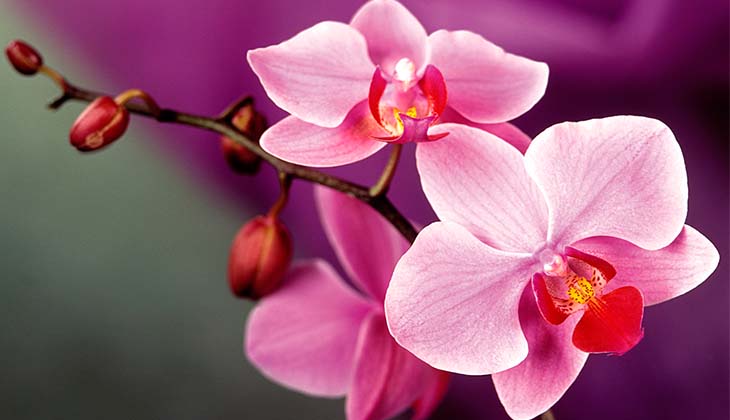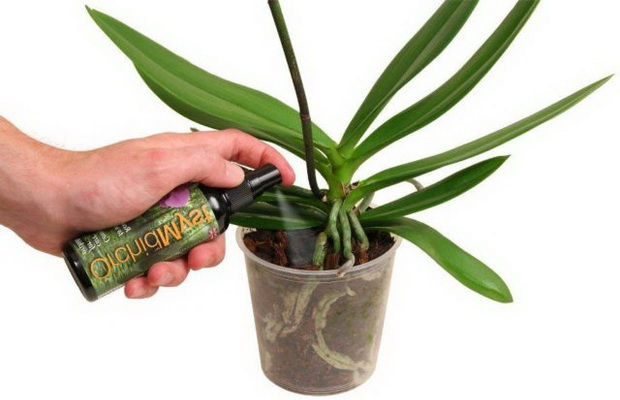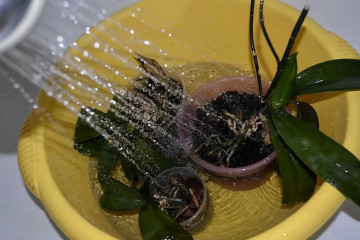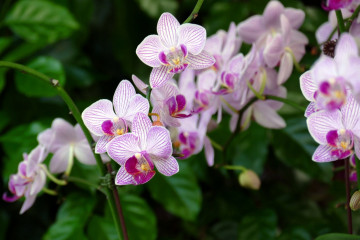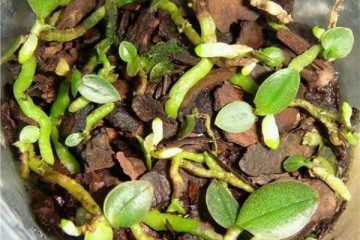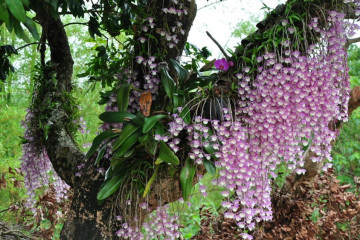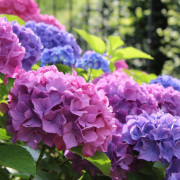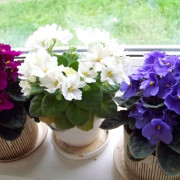How to feed an orchid at home: folk and improvised remedies
Content:
Due to its unpretentious care and long flowering, Phalaenopsis orchid is one of the most popular indoor flowers. Like any plant, it needs additional feeding, which will contribute to its proper development. Knowing how and what to feed an orchid at home, you can create suitable conditions for a long and beautiful flowering of this exotic beauty.
Top dressing methods
There are two methods of applying top dressing: root and foliar.
Root
This method of feeding is used only for healthy plants.
Sequencing:
- Before fertilization, the roots of the flower are well moistened;
- Fertilizers, according to the instructions, are diluted in water, which should be at least 26-30 degrees.
- A pot with a flower is placed in a basin with a solution and poured over the orchid from above, trying not to fall on the buds and in the leaf axils;
- Leave the orchid in the basin for further nutrition for 25-30 minutes;
- Take out the flower pot from the basin, allow the remaining liquid to drain.
Such dressings are best done early in the morning, when the plant is able to absorb nutrients well through the root system.
Foliar
This method of fertilization is used if the root system is diseased or severely damaged.
In the process of carrying out foliar feeding, it is worth adhering to the following rules:
- The concentration of the solution is reduced by 2 times, on average, 2.5 ml of fertilizer is taken per 1.5 liters of water;
- Top dressing is carried out early in the morning and after it, for 3-4 hours, the flower is protected from direct sunlight;
- Spraying is carried out in a warm room without drafts;
- The plant is sprayed very carefully, avoiding the ingress of liquid into the points of growth and flower stalks.
Folk remedies for feeding
Such dressings are always at hand, are considered cheap and environmentally friendly, in addition, they will remarkably enrich the soil and save the flower from the development of all kinds of diseases:
- Coffee or tea. These two drinks contain a huge amount of minerals that the plant needs so much.
- Banana skin. Fresh or dried peel of one banana is infused in one liter of warm water. The resulting infusion is filtered, diluted with water in a ratio of 1: 1, and the orchid is fertilized after watering.
- Potato decoction. Contains a large amount of potassium and phosphorus. After boiling the potatoes, the water is drained, filtered, cooled and used to feed the orchid.
- A decoction of onion peel with the addition of lemon or tangerine peel. Folk recipe - 50 grams of husks are crushed, poured with three liters of water, brought to a boil, removed from heat and insisted for 10-12 hours. The infusion is diluted with water in a 1: 1 ratio and used for spraying or watering orchids.
- Ash from coniferous trees. A solution is prepared from it. Take 200 grams of ash, pour 1 liter of water, insist one day. The infusion is filtered and used for root dressing.
- Chicken bones. Dry bones are crushed and sprinkled with the resulting powder in the potting soil.
- Chicken egg shell. It is crushed into powder and added to the soil.
- The liquid after boiling brown brown rice. Good for growth.
Is it possible to feed with yeast
Is it possible to water an orchid with yeast and how best to do it?
Fungi found in yeast:
- Promotes more active growth of orchids;
- Have a positive effect on immunity;
- Provide resistance to adverse conditions, diseases and pests;
- Prolongs the duration and abundance of flowering.
Yeast also increases the activity of microorganisms in the soil and increases the level of carbon dioxide produced.
Yeast feed is prepared as follows:
- For 1 liter of water, take 10 grams of yeast and 1 tbsp. a spoonful of granulated sugar;
- The components are mixed and infused for two hours in a warm place;
- The resulting infusion is diluted with water in a ratio of 1: 5 and the flower is watered.
Organic fertilizers
How to feed an orchid from organic matter at home so that it grows well, blooms profusely, and also fixes well in a pot with a light substrate?
Rotted manure and wood ash are considered the best fertilizers.
Manure
Rotted horse manure is considered the best for feeding an orchid. It must be dissolved in water (1 kg per 10 liters of water) and water the flower during the period of active leaf growth.
Ash
Ash obtained after burning wood is diluted in water (200 grams per 1 liter of water) and used for watering orchids. Such a remedy will compensate for the lack of phosphorus, potassium, calcium and other nutrients in the soil.
This fertilizer is able to get rid of rotting damaged areas on the plant.
Flower feeding periods
When is the best time to fertilize an orchid depending on the season and stage of flower development?
In winter
At the beginning of winter, all orchids need a minimum amount of fertilizer. With the arrival of January, most orchid varieties are dormant. At the end of winter, it is necessary to gradually increase the amount of top dressing. How often do you need to feed an orchid during the winter so that it grows well? It is recommended to apply top dressing no more than once a month. It is better to use phosphorus-potassium complexes as fertilizers, which activate the appearance of new buds and help Phalaenopsis to bloom.
In autumn
At the beginning of September and until the end of November, it is necessary to increase the amount of dressings, as the plant prepares for flowering. It is necessary to apply fertilizers at intervals of once every 10-14 days. For good bud formation, an orchid needs nitrogen, phosphorus and potassium. The plant should be fed with complex orchid fertilizers, which can be purchased at a flower shop.
Feeding during flowering
Is it possible to feed orchids during flowering, and how to do it correctly? Phalaenopsis needs additional nutrition during the formation of peduncles and during the formation of buds. Therefore, it is fed twice a week with complex fertilizers that do not contain nitrogen.
When most of the buds are in full bloom, it is best to reduce the frequency of feeding to once a week. Otherwise, the flowering period will be short and the development of new buds will stop.
After flowering
How often to feed the orchid after flowering and should it be done? After the orchid has faded, it needs to recuperate and receive the necessary nutrition. After flowering, the plant is fed for seven days, as the last flower has bloomed. After that, do not disturb the orchid for two weeks. During the dormant period, orchids need to be fertilized with complexes containing nitrogen and a small amount of phosphorus.
It is not necessary to cut off the peduncle immediately after the end of flowering. Very soon, subject to proper nutrition and lighting, either a lateral peduncle can grow from it, or a baby can form.
It is important for any grower that the flower is healthy and develops well. To do this, you need to regularly fertilize the orchid in accordance with the given rules, and it will decorate the house with its emerald leaves and beautiful flowers.

